It has been some time since I put up a blog on Lemon Farming. I have received several calls for more information regarding fertilization and prevention of fruit and plant damage from pests, viruses, diseases, etc. I will try to bring out some more information on these aspects in this blog. For those who have just joined this subject, I suggest kindly go through the first blog Lemon Farming on this website.
Fertilization tips:
As I usually do in all fertilization tips, it is always advisable to first get your soil and water analyzed for EC, pH, N.P, K, and other fertilizers present and absent. These analysis values are to be reduced from the overall fertilizer scheme. Interested may please see Control E.C. and pH.
So to make it simpler, we take two types of recommendations for lemon farming – one area-wise and the second per plant-wise. Nitrogen needs to be applied at least 3 times in a growing season, for example in February, May, and September.
Area wise: for one acre of land lemon farming for one season.
- Use DAP, MOP, and Urea as 50, 40, and 80 kg respectively, or
- Use MOP, SSP, and Urea as 40, 150, and 100 kg respectively, or
- Use a pre-mixed 10-26-26 NPK and Urea as 80 kg each
No of Plants wise: example 100 plants lemon farming
- Use DAP, MOP, and Urea as 60, 100,100 kg respectively, or
- Use a premixed 10-26-26, MOP, and Urea as 110, 50,100 kg respectively.
Lemon is a hard user of nitrogen and it would be best to keep it spray fertilized at alternate months. Lemon also requires nutrients and is best by spraying.
Pests, fungi, Bacterial Diseases, and other identification and treatment in lemon farming.
I recommend also go through my blog Diseases and Pests of your Plants.
Now let us take up what damages to our lemon plants, why they occur and how to control them. The table below depicts some typical damage types.
| Name | Symptoms | Treatment | How it looks |
| Anthracnose), Alternaria rot, and brown rot (all fungus) | Light tan spots on leaves; dry brown to black spots on fruit; black rot in the navel and spreads; ripe fruit turns light brown. | Apply sprays of copper oxychloride, and carbendazim. Avoid too much irrigation. | 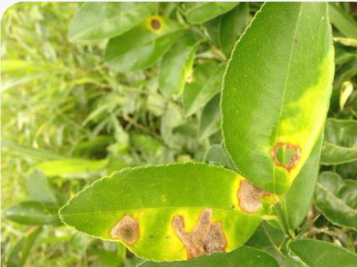 |
| Greening disease (bacteria) | Blotchy mottling of leaves, veins yellow, stunted growth. Yellow shoot on the plant in the starting. | The tree should be removed |  |
| Aphids (insects) | Curled deformed leaves, stunted growth, and small insects under leaves/shoots, produce honeydew which attracts ants | 1 gm per liter spray of Acephate 75% SP | 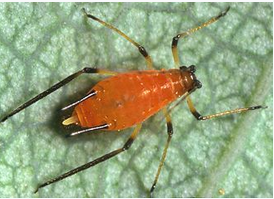 |
| Slugs and snails | Feeding damage in leaves, flowers, silvery trails, and large holes in leaves. | Forate in the soil, dichlorophos spray. Pick and destroy by hand. | 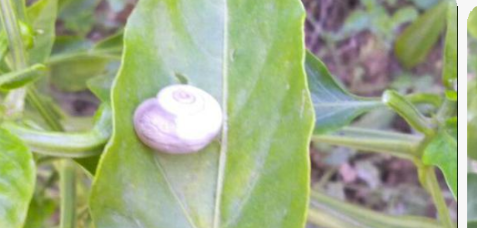 |
| Silver mites | Feed on exposed surfaces of fruit. The skin turns silvery, reddish, or black. Lose the glossy nature. | Early stages use oil/soap or soap solutions on the underside of leaves. Use Febpyroximate 5% e.c. twice with two weeks interval. | |
| caterpillars | New leaves have holes. Feeds on buds and early fruit. | Sanitary conditions in the field. Use Coragen or Fame 5 ml/15 ltr spray. Use methomyl. | 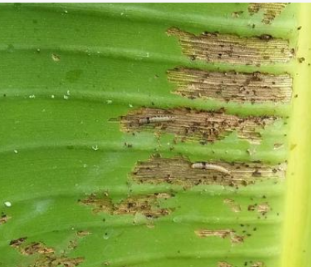 |
| Ants | Feed on twigs, bark, leaves, and honeydew excreted by insects | Use sticky tree bands and prune the trunk at least 30 cm from the ground. Use Borax. Use soap solutions spray. | |
| Excessive fruit drop | Sudden temperature change, heat wave, too much or too little watering, nutrient deficiency. | Check nutrient deficiency and apply appropriate fertilizer. Check moisture. | |
| Yellow leaves, no mites | Overwatering | Decrease irrigation | |
| Calcium deficiency | Random yellow spots on leaves, wilt of plant, curled leaves, poor development. | Use calcium fertilizers in soil, lime(if soil pH is negative), gypsum(if soil pH is positive), cal nitrate spray | 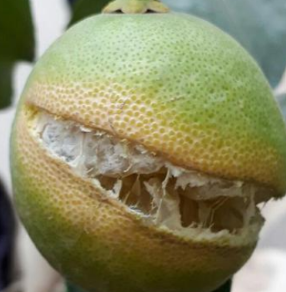 |
| Thrips | Ring of scarred tissue on fruit near the stem end. Young leaves deformed. | Count no of thrips. If less ignore. Use neem oil spray. Water the plant. Spray pyrethrin or imidacloprid. | 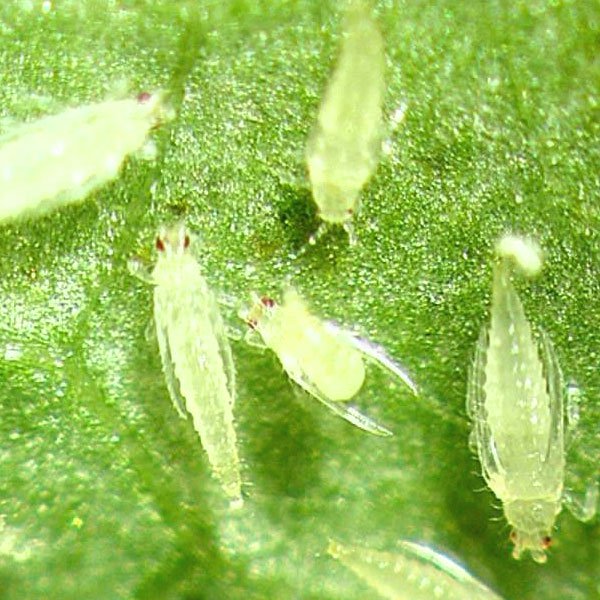 |
| Sunburn | Wilting and yellow of leaves from margins | White clay, talc, or cal carbonate solution spray. | |
| Leafminer | Twisted and deformed new leaves. Tunnels seen in leaves. Upward curling of leaves. | Remove infected leaves. If infestation is more use imidacloprid, dichlorvos (Nuvan) |  |
| Whitefly | If branches shook, tine whiteflies fly out. At rest spots seen on leaves. Whiteflies secrete honeydew and attract ants. | The prime objective is to remove ants. Best use soap, soap and oil, and soap, oil, and neem oil solution sprays. Use borax for ants. |  |
Nutrient Deficiency symptoms in lemon farming.
Using fertilizers slowly increases productivity at first, but pushing it beyond a point is detrimental to productivity and if not corrected, plants will die. A balancing of Fertigation is thus most essential in fertility management. Table below gives some common deficiency symptoms of nutrients. This should help farmers for a quick and early detection of deficient nutrients.
Nutrient Deficiency symptoms
| Nitrogen | Older leaves turn yellow and gradually move upwards | Spray urea solution. | 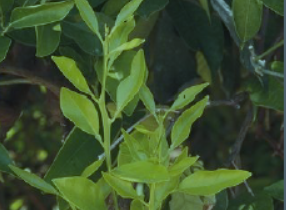 |
| Phosphorus | Brownish discoloration along the vein on underside of old leaves. Fruit is coarse thick rinds & low juice. | 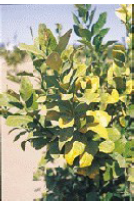 | |
| Potassium | Burnt edges of older leaves. Increased sensitivity to diseases. Production less and poor quality. Small fruit, thin peel. | Foliar spray of potassium nitrate. | 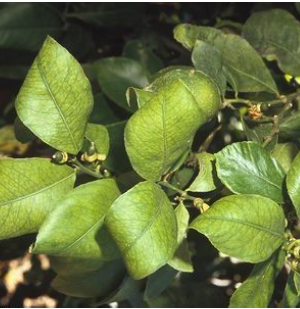 |
| Magnesium | Older leave yellow with interveinal chlorosis. Slow growth. | Foliar spray of Magnesium, give NPK with magnesium in soil | 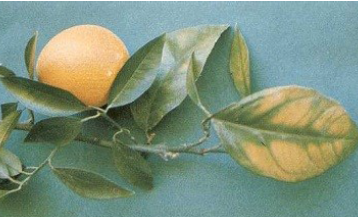 |
| Calcium | As above | ||
| Boron | Premature wilting, shedding of leaves, bushing appearance, splitting in fruit, gum spots, abnormal shape | Foliar spray of Borax. | 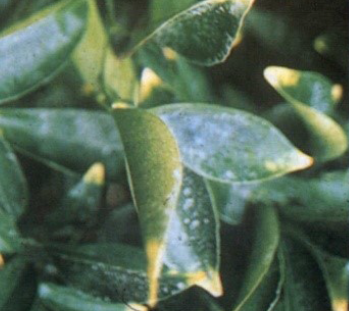 |
| Copper | Slow growth of plant; stunted, distorted young leaves, death of growing point, | Foliar spray of copper sulphate fortnightly. |  |
| Iron | Thin, interregnal chlorosis in young leaves. | Foliar spray of iron sulphate FESO4 | 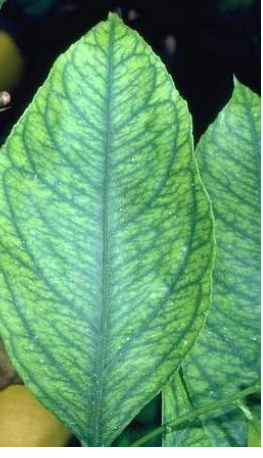 |
| zinc | Irregular chlorite leaf spots, small size leaves and dieback of twigs. Small thin peel fruit. | Foliar spray 2% zinc sulphate | 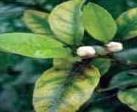 |
further reads:
Leave a Reply